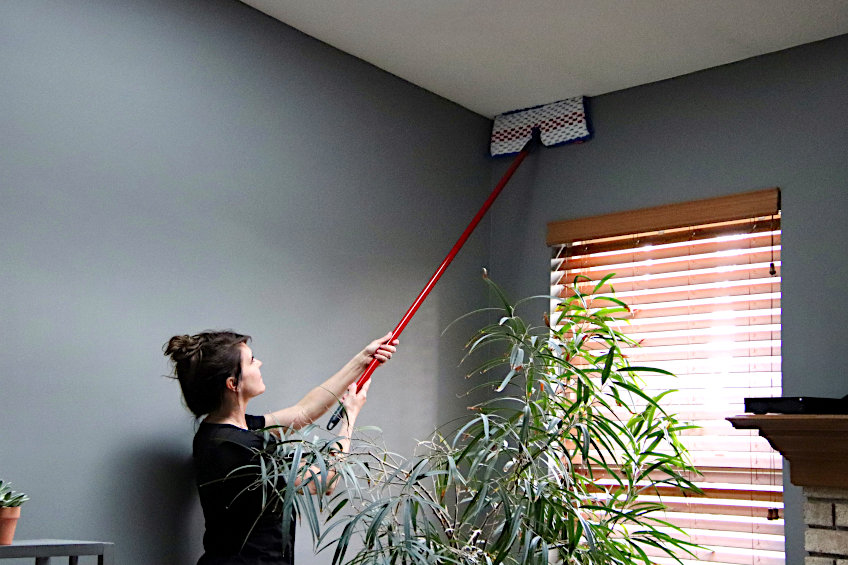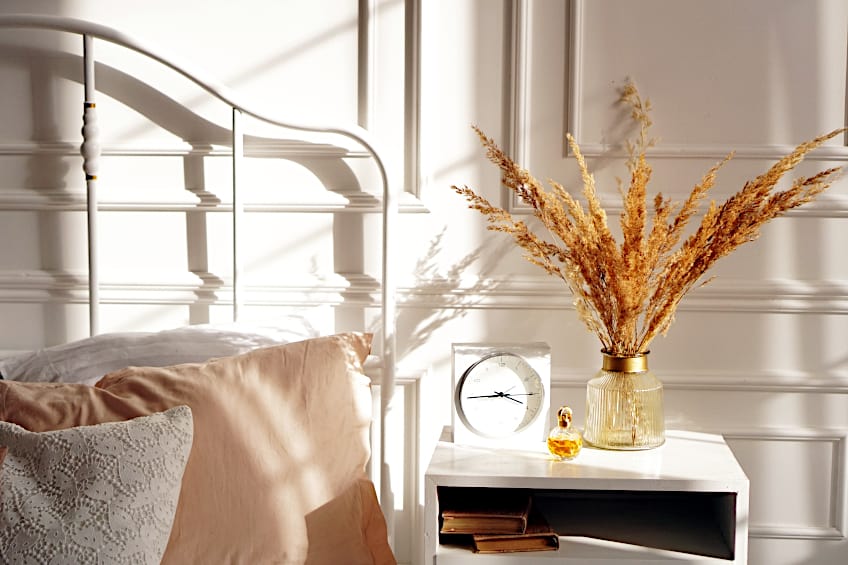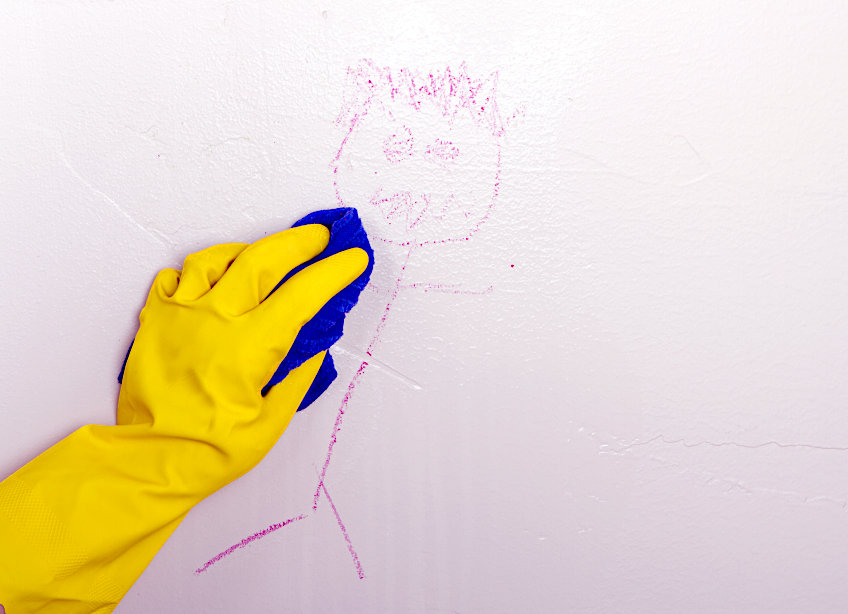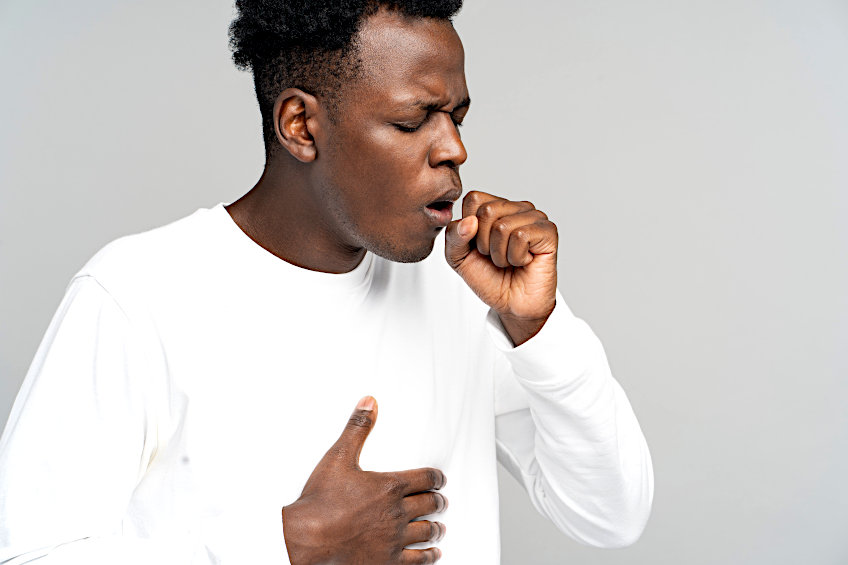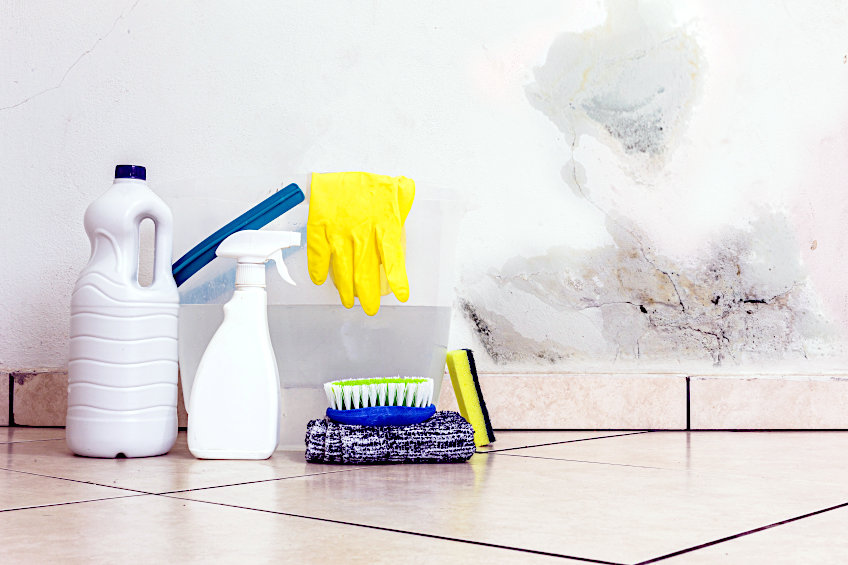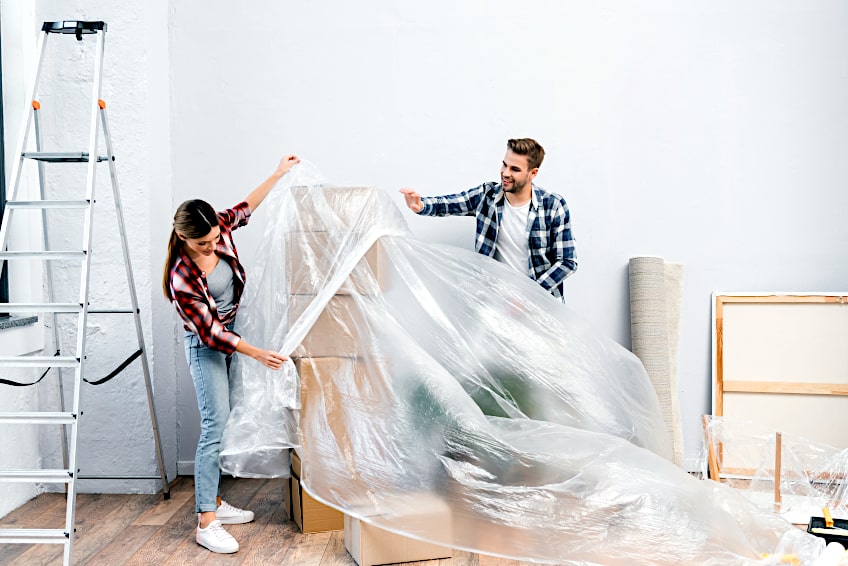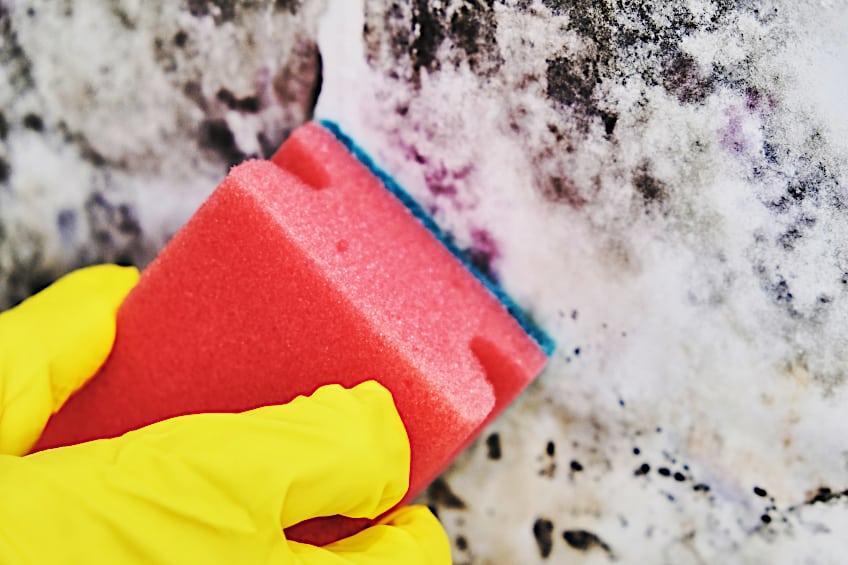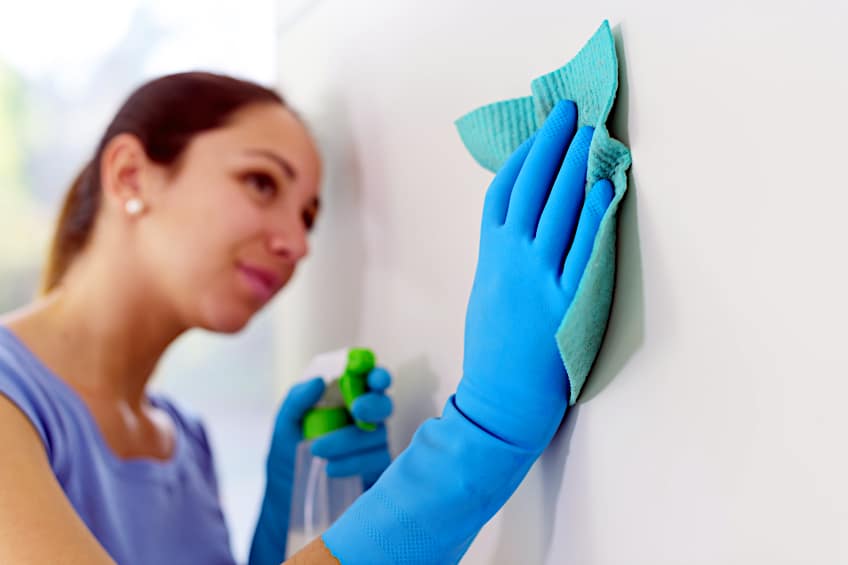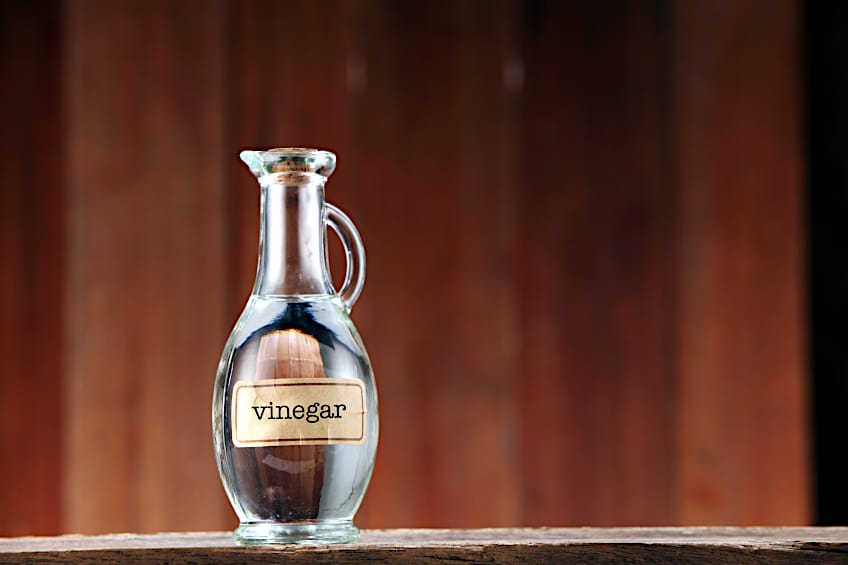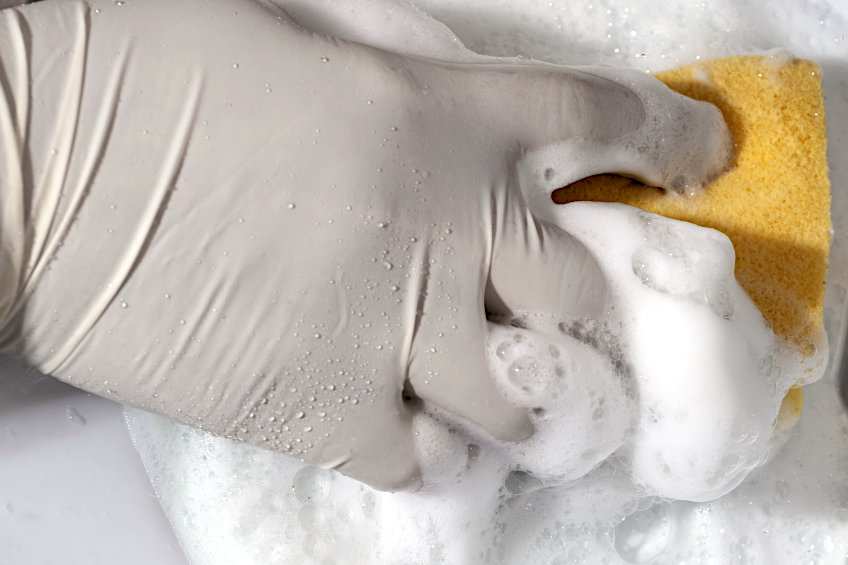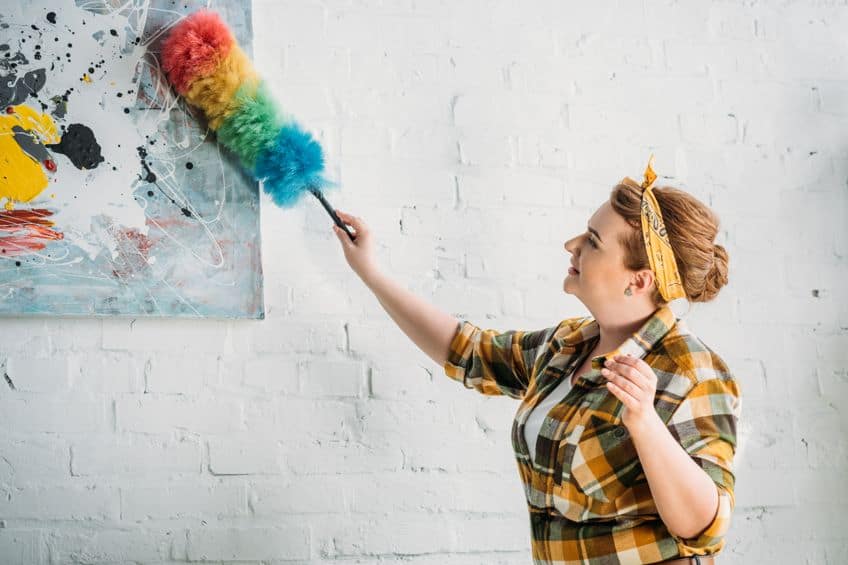How to Clean Walls With Flat Paint – Matte Paint Maintenance
This post may contain affiliate links. We may earn a small commission from purchases made through them, at no additional cost to you. You help to support resin-expert.com
We tend to take a lot of things for granted in our daily lives. Whether it is running water or the clothes we wear, some things are just always there and therefore rarely warrant our attention. Shelter is another good example, as the four walls keep us safe, warm, and maintain our privacy. Walls tend to get neglected a lot, and often need a good clean to breathe some life back into them. That being said, walls coated with flat paint aren’t easy to clean, so we thought we’d show you how to clean walls with flat paint, and why it’s important to keep your walls as clean as possible!
Table of Contents
What Is Flat Paint?
Before we show you how to clean walls with flat paint we thought it would be a good idea to show you what flat paint is and why it’s become such a popular choice among homeowners. As the name suggests, matte paint is, well, flat. A “flat” paint essentially has no luster or “shine” to its finish, effectively absorbing light instead of reflecting it.
Shiny paint is good though, right? Well, this is subjective. While some applications call for a paint that interacts with light and makes a space feel bright, others simply don’t. There can be many reasons for this, a good example of which is when a space gets a ton of natural light. Using a gloss finish can make the space overwhelmingly bright during the day.
Gloss and satin coatings also show every surface imperfection, which can be a pain if you are trying to achieve a sleek modern look, or if your space has a lot of architectural detail.
How does flat paint manage to absorb light? Essentially, it has a lot of pigment in its composition. Flat paint has far more pigment than any other paint type, which allows it to absorb the light interacting with it instead of having it bounce off the paint’s binder. This makes flat paint completely non-reflective, regardless of the type of light it interacts with.
Is that why flat paint is so popular? Well, it’s one of the reasons. Arguably the most attractive characteristic of flat paint is that it is really cheap. It’s cheaper than gloss, semi-gloss, and even matt finishes, which means it can be purchased and used in large volumes without breaking the bank. This isn’t the only reason flat paint is so widely used though.
While other finishes like satin and gloss can be tricky to apply, flat paint is very easy to use.
Since flat paint has no reflective properties, it will not highlight any imperfections on the surface of your walls. It’s also really difficult to notice spots where the paint hasn’t been evenly applied, making it a great finish for those who are new to commercial painting.
All of the aforementioned can make it seem like flat paint is the perfect option if you’re looking for a low-maintenance, affordable, easy-to-use paint. However, there’s no such thing as perfect paint, so what’s the catch when it comes to flat paint? Well, this paint can be a bit of a challenge to clean, thankfully we’re going to show you how to clean flat paint walls correctly.
Why Is It Important to Clean Your Walls?
Before we show you how to clean flat paint walls, we thought we’d cover why cleaning your wall is important, to begin with. As we mentioned previously, walls are often neglected, which can lead to your walls becoming an eye sore and even a potential health hazard, so let’s have a look at a few reasons that are sure to motivate you to give your walls a thorough clean.
It Can Be an Eyesore
One of the most obvious reasons why you should clean your walls is that a dirty wall can in the look and feel of an entire space. Everyday sludge marks, grime, and stains instantly draw the eye, while, pets and children can really mess up your walls. Cleaning your walls ensures that your space looks and feels great regardless of the size or color.
It Prevents Mildew and Mold
Whether it’s an interior or exterior surface, cleaning your walls regularly will ensure that there is no build-up of particles that could potentially lead to things like mold, mildew, or insect infestation.
Giving your walls a good scrub removes these particles, preventing them from accumulating and potentially becoming a breeding ground for bacteria and other organisms.
It Can Prevent Respiratory Illnesses
If you have comorbidities like asthma, dust can be a major trigger. Dust tends to build up on surfaces that are porous and aren’t regularly maintained. This makes wall surfaces prime real estate, so naturally cleaning the surfaces of your walls regularly can go a long way in ensuring you and those around you are safe from inhaling dust and other particles that could cause you harm.
It Can Increase the Lifespan of Your Wall
Every material on the face of the planet has a lifespan, and regardless of if your walls are made of brick or drywall, they do too.
Cleaning the surface of your walls prevents the build-up of contaminants in cracks and recesses, which could potentially affect the structural integrity of your walls.
Therefore, cleaning your walls can increase their lifespan and ensures the safety of your home and its occupants.
Preparing to Clean Flat Paint Walls
It’s finally time to learn how to clean flat paint on your walls. The cleaning process is fairly straightforward and depending on whether you have the right tools for the job and the size of your space, shouldn’t take too long. Let’s have a look at how to prepare your walls before you get started and then how to clean flat paint on your walls.
Gather the Things You Will Need
- A cloth and/or sponge
- Eraser sponge
- Touch-up paint
- A paint brush
- White vinegar
- Detergent
- A foam cleanser
- A ladder (for tall walls)
- Gloves
- A face mask
- Eye goggles
While you’re probably itching to get started you should ensure that you have everything, you’ll need to get the job done. What do you need to clean flat paint on walls?
First off, you’ll need a clean sponge and/or cloth for the majority of the work. This will be your primary tool so make sure it is of decent quality.
Next, you will need some white vinegar and an eraser sponge. These are also really important when cleaning flat paint, as the surface can be sensitive to certain chemicals and the amount of force you use while you are cleaning. Be sure that you have decent-quality vinegar, and as far as eraser sponges are concerned, you should be able to get one at most major retailers.
Next, you’ll need to get your hands on a decent-quality foam cleanser and detergent. These can also be found at any hardware or basic retail store and tend to be relatively inexpensive. Finally, get your hands on some touch-up paint and a paintbrush you can use to spot-repair small areas on your wall. Once you have everything you need, move on to the next step in the process.
Prepare Your Workspace
Next, you will have to prepare your workspace. This part is equally as important as cleaning your walls as the last thing you want is to have a perfectly clean wall, but your floor and furniture have been damaged during the cleaning process. How do you prepare your workspace though? Well, start off by covering furnishings and parts of your floor that could come in contact with cleaning agents.
You can get a tarp or simply cover these surfaces with some old newspaper. If you’re worried about your coverings moving, secure them with some painter’s tape, or weigh them down with something if you don’t have any. Next, ensure that your work area is well-ventilated.
Remember that the fumes from cleaning chemicals can build up in a space quickly, and can be hazardous to your health.
Finally, ensure that you are protected. Keep in mind that cleaning chemicals can cause discomfort should they come into contact with your hands, eyes, or respiratory system. This is why it’s a good idea to ensure you wear a pair of gloves, eye goggles, and a face mask if you are going to be working up close with potentially harmful chemicals.
Test Your Cleaning Solutions
Before you commit to using these products on the entire wall, we recommend you try out your cleaning products on a small, inconspicuous section of the wall beforehand. Why? If the products interact with the surface negatively or don’t do a very good job of lifting the grime, you can simply stop and try an alternative. We recommend trying some warm water first, then a cleanser sponger, then some vinegar, and if all else fails, some store-bought detergent.
This test kind of doubles as a trial run. Since you’re only testing on a small section of your wall you should be able to tell fairly quickly which cleaning product best suits your needs. Additionally, if this section of your wall is at all damaged by any of the products, you have some touch-up paint and a brush to cover it up.
Don’t forget to neutralize all cleaners and ensure the wall is completely dry before attempting a touch-up job though.
How to Clean Walls With Flat Paint
As we mentioned previously, cleaning walls is a bit of a trial-and-error process, which is why you’ve tested which method is most effective against the particular stains you will be attempting to clean.
Oil-based stains are generally more difficult to remove, in which vinegar, and detergent are more likely to be effective.
Water-based stains should be significantly easier to remove, as a cleansing sponge and some water should get the job done. Here is how to execute each cleaning method.
Using Water and a Cloth/Sponge
Before you execute any of these methods, it’s best to dust the surface of your wall to ensure that no dust gets caught up in the cleaning products once you apply it. Using a clean cloth or feather duster remove all the dust from the surface of the wall you will be cleaning. Once you’re done, get a bucket, fill it with some water, and get to cleaning.
We recommend working from one end of the wall to the other. If your walls are large, try tacking the wall in sections to ensure that you get to clean the wall as thoroughly as possible. Don’t be afraid to dig in and use some elbow grease for stubborn stains, and ensure you rinse your cloth every once in a while to ensure you don’t spread the grime.
Once you’re done. Allow the wall to dry completely.
Using Vinegar and a Sponge
If plain water didn’t do the job, using a sponge and some vinegar is the next step. As you did in the previous method, ensure that the surface of your wall has been dusted by using a cloth or a feather duster. Once you are sure your wall is clean, mix one tablespoon of vinegar with some warm water in a bucket and get started.
Be as careful as possible when scrubbing flat paint, especially if you’re using vinegar and a sponge. Start from one end of the wall and work your way to the other, working in sections if your wall is large.
Do not apply too much pressure or you could end up lifting the paint, but don’t be afraid to add some pressure for stubborn areas.
Once you’re done, allow the wall to dry for a bit. Since you used vinegar, the smell will likely linger on the surface of the wall, so get some water and a clean cloth and give the surface of your wall a good once-over to neutralize the smell and any active acidic properties from the vinegar.
Use an Eraser Sponge for Tough Stains
If you have some stains that simply refuse to come out once you have used the sponge and vinegar approach, try using an eraser sponge on these areas.
These are awesome when it comes to tough water-based stains, and you won’t have to use a ton of elbow grease either. Once you’re done, simply allow the wall to dry.
Using Foam Cleaner
If you have stubborn stains and want to know how to clean matte walls without removing paint, a good foam cleaner could be your answer. Foam cleaners are essentially spray-on liquids that turn to foam once applied to your wall’s surface. Dust your walls as thoroughly as possible and apply the cleanser directly to your wall.
Once applied, use a sponge to scrub the wall lightly and work your way from one end of the wall to the other. If your wall area is large, clean it in sections, reapplying the foam cleanser when necessary. Once you’re done, wipe off any remaining cleanser with a clean cloth.
When using foam cleanser be sure to stick to the manufacturer’s instructions for the best results.
Using Diluted Detergent
If none of the aforementioned methods have worked and you’re wracking your brain trying to figure out how to clean matte walls without removing paint, detergent might be your last resort.
Once again, ensure that you have removed all of the dust from the surface of your walls using a clean cloth and/or a feather duster before you begin.
Next, mix one tablespoon of detergent in some warm water and get to cleaning. Feel free to use a sponge (scrub lightly!) and cloth for this method. Work from one end of the wall to the other, working in sections to ensure a thorough job. Once you’re done give the wall a once over with some water and a clean cloth to dissipate the smell and allow the wall to dry completely.
Tips for Maintaining Flat Paint Walls
Maintaining anything can require a lot of conscious effort, but it ensures that our belongings (and surfaces in this context) last. When it comes to flat-painted walls all you need to do is ensure that you don’t scrub too hard when cleaning them and that you do your best to dust and clean them as regularly as you can, or as the situation demands.
Finally, if you do manage to remove some paint while cleaning, which is a common problem with flat paint, simply touch the area up. Get a matching paint and do your best to blend it in with the rest of the wall as much as possible. Alternatively, you could simply repaint the entire wall with a finish that is less demanding when it comes to maintenance.
Now that you know what flat paint is all about, what makes it such a tough surface to clean at times, why it is a good idea to clean your walls every once in a while, maybe you should try out some of your newly acquired skills? Keep in mind that flat paint is like any other paint and should be handled and applied only while wearing the correct protective measures such as a face mask, gloves, and eye goggles.
Frequently Asked Questions
Is Flat Paint and Matte Paint the Same?
The answer to this is yes and no. Flat and matte are both terms used to describe paint that is devoid of any sheen. Most manufacturers market and sell paints using these labels interchangeably. Some paint manufacturers have products under both labels, where the only distinction between the two is that matte paint is slightly more glossy than flat paint.
Is Matte Paint Better Than Flat Paint?
This depends on the application and the specific brand. Flat paint has less inherent gloss when compared to matte paint, but the difference is barely noticeable in most applications. They are both great at concealing imperfections on wall surfaces, but paints labelled “flat” may simply the cheaper and less durable version of the matte paint produced by the same manufacturer.
Is Flat Paint Washable?
Flat paint is washable, but it can be challenging. Flat paint tends to lift and scratch if you scrub it too hard, which means that you need to work gently and ensure that you have the right cleaning products on hand when attempting to clean a flat finish.


